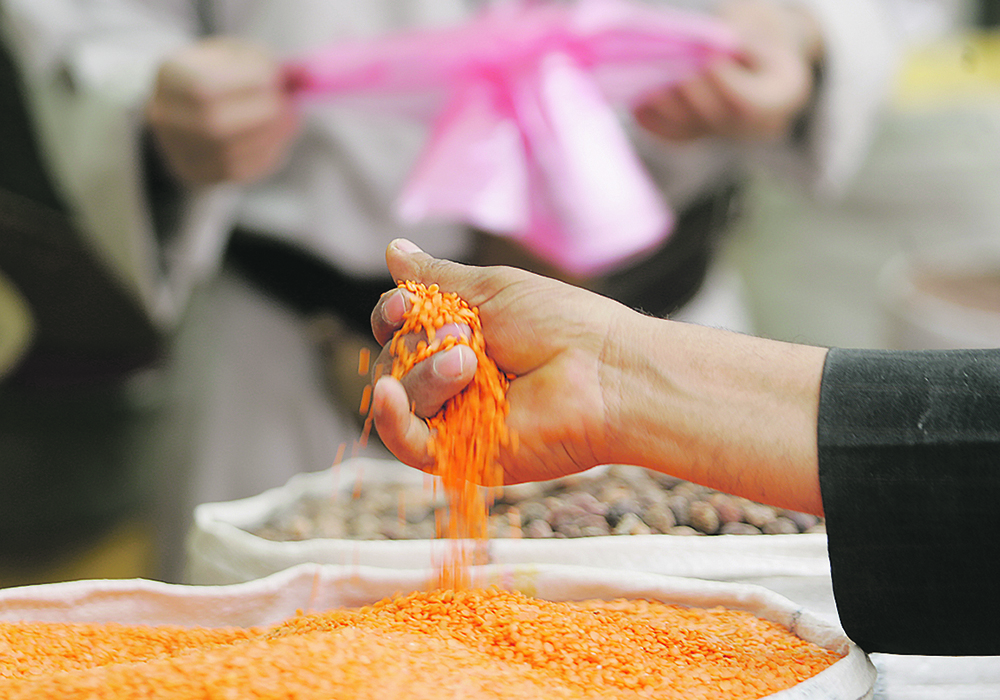It’s thought the country’s farmers harvested 190,000 tonnes this year, well below the 300,000 tonnes grown in 2017
Expect another active export program to Canada’s second biggest red lentil customer, says an industry executive.
“Turkey will be in the market for sure,” said Fethi Sonmez, chief executive officer of Armada Foods, one of the country’s largest pulse processing firms.
He estimates Turkish farmers harvested 190,000 tonnes of lentils this year, which is a far cry from the official government forecast of 392,146 tonnes and Stat Publishing’s best guess of 451,000 tonnes.
Sonmez told delegates attending the Global Pulse Confederation’s Pulses 2.0 virtual annual conference that production is well below 2017 levels of 300,000 tonnes, which was considered a “good year.”
Read Also

Critical growing season is ahead for soybeans
What the weather turns out to be in the United States is going to have a significant impact on Canadian producers’ prices
“We know that by the arrival of trucks every day,” he said.
It will be the third year in a row of disappointing production for the country.
That is why Turkey imported 380,000 tonnes of lentils in the first seven months of 2020 compared to 350,000 tonnes for all of 2019.
Sonmez said Turkey’s poor crop is a bullish factor for the red lentil market.
However, big crops in Canada and Australia are bearish factors. Stat Publishing is forecasting 2.18 million tonnes of Canadian red lentil production.
David Hanna, president of Global Food & Ingredients, agreed that Canada harvested a large, good quality crop of red lentils but it doesn’t have many willing sellers at today’s reduced prices.
“We’re seeing a lot of resistance to lowering prices at the farm level,” he said.
Farmers are holding out for the red lentil prices they saw a few months ago. In the meantime, there is good movement of other crops, such as wheat and canola.
Storage space is not a problem. There is an abundance of available on-farm storage because of strong COVID-19-related crop movement in 2019-20.
“We could see a higher-than-average carryover if prices are not supportive,” said Hanna.
There is also a big crop in Australia, which is Canada’s top export competitor.
Mostyn Gregg, a trader with Agrocorp International, is forecasting 750,000 tonnes of Australian red lentil production, up from 534,000 tonnes last year.
“I think Australia is going to be hypercompetitive pricewise with Canada,” he said.
Gregg expects Australia to be particularly competitive into Bangladesh, which is Canada’s fourth largest market. He is forecasting 250,000 tonnes of Australian exports to that country.
Like their Canadian counterparts, Australian growers are expected to be “cagey” when it comes to selling this year’s harvest because of the lingering memory of good prices over the last six to nine months.
Canada can expect vastly reduced competition from Kazakhstan, a country that was recently a fierce competitor.
Kintal Islamov, chair of JSC Atameken-Agro, estimates Kazakhstan harvested 43,000 tonnes of red lentils, down from 75,000 tonnes last year.
This year’s crop is nine times smaller than the one farmers harvested in 2017. Farmers have opted to grow wheat instead of lentils the past couple of years because of more favourable prices.
Gregg said the big question for the red lentil market remains what will happen in India, the world’s largest importer of the crop.
India recently dropped its import duty on lentils to 10 percent from 30 percent but nobody knows how long that will last.
“You’ve got an expert panel here, which really is stuck because we don’t know what way (India’s import policy) is going to shift,” he said.


















